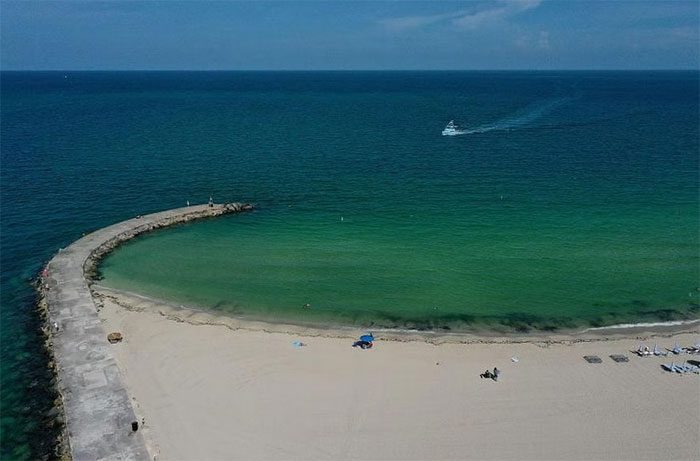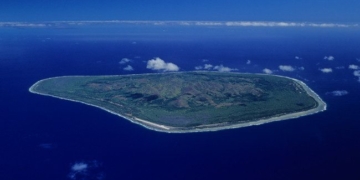Scientists Reveal Changes in Color of Over Half of the World’s Oceans.
The AFP news agency (France) reported that according to a study published on July 12 in the journal Nature, in the past 20 years, 56% of the world’s oceans have changed color from deep blue to green over time, particularly affecting areas at lower latitudes near the equator.
Researchers from the UK National Oceanography Centre and the Massachusetts Institute of Technology (MIT) in the United States collaborated on this study.

56% of the world’s oceans have changed color from deep blue to green. (Illustrative photo: AFP)
The authors of the study published in Nature believe that the cause of this phenomenon is due to changes in the ecosystem, particularly related to phytoplankton, which are central to the ocean food web and play a crucial role in stabilizing our atmosphere.
One of the researchers, Mr. BB Cael from the UK National Oceanography Centre, commented to AFP: “The reason we are interested in the change in sea color is that it reflects the state of the ecosystem. Thus, a change in sea color signifies a change in the ecosystem.”
The scientists studied data from 2002 to 2022 from the MODIS-Aqua satellite of the National Aeronautics and Space Administration (NASA). The color of the ocean, as observed from space, can illustrate what is occurring in the upper layers of the sea. The ocean’s color originates from the components in its surface layer.
Deep blue sea color indicates a lack of life, while greenish water reflects more activity, particularly from photosynthetic phytoplankton, similar to trees that contain green chlorophyll. These phytoplankton produce oxygen for us and hold a vital role in the global carbon cycle while being the foundation of the ocean food web.
Ms. Stephanie Dutkiewicz at MIT mentioned that ocean ecosystems are balanced, and any changes to phytoplankton will impact the food chain. “All these changes are causing imbalances in the natural organization of the ecosystem. Imbalances will only worsen over time if our oceans continue to warm,” she stated to CNN.
She also added that this affects the ocean’s ability to store carbon because different phytoplankton can absorb varying amounts of carbon.
Phytoplankton of different sizes will scatter light differently. Additionally, phytoplankton with different pigments will absorb light differently. Research on changes in ocean color will help scientists understand changes in phytoplankton populations worldwide.
Scientists are urgently investigating the reasons behind the color change of seawater
Currently, these changes are not severe enough to cause a “revolution” in the ocean food system; however, they are astonishing when looking at the observational results.
The research team will continue to explore to find the exact causes of the changes in seawater color to better predict the evolution of the oceans as the Earth warms.
One scientific assessment suggests that multiple factors changing together lead to the color change of seawater, such as microplastic pollution being one reason.
NASA plans to launch an advanced satellite named Pace in January 2024 with the mission to measure ocean color.
- James Webb Telescope Reveals Secrets of the Universe: Is the Big Bang Just a Human Imagination?
- Inside the Tomb of Qin Shi Huang, Only One Species of Lush Green Plant Bears Fruit, But No One Dares to Eat It
- The “Loneliest” Gold Mine in the World: Surrounded by Gold, But No One Extracts It, Mentioning It Sends Chills


















































